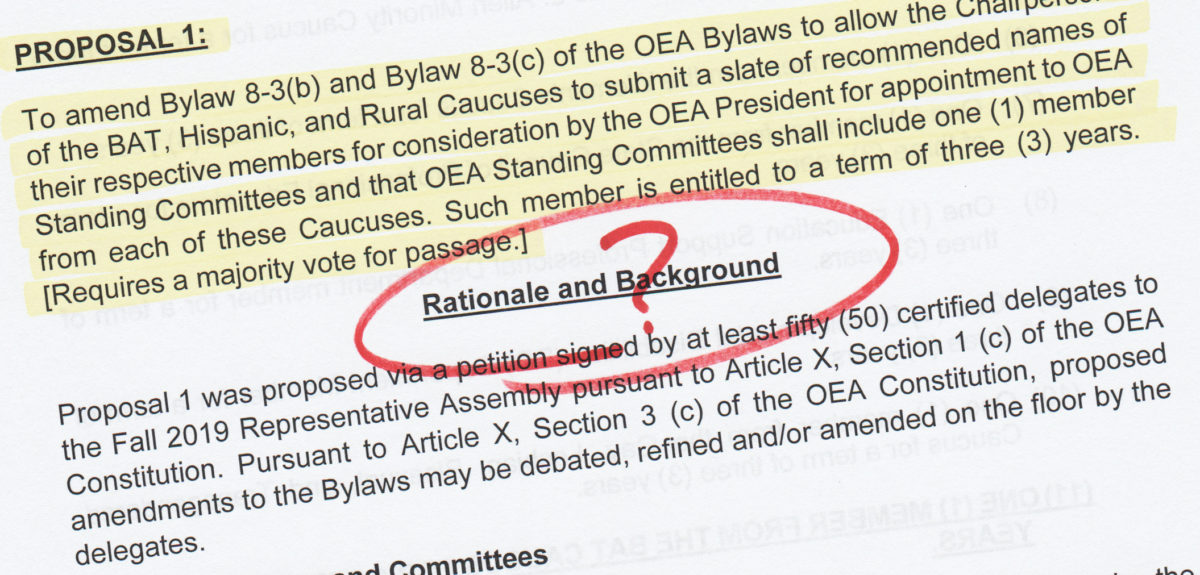If you’ve read my last post, “OEA’s RA: A Contrarian Considers,” then you know that I think we needed to do a better job of deliberating about the issues at OEA’s virtual Representative Assembly on Saturday. Today I want to explain why I expect to vote against Proposal 1 when the mail ballots come out.
It’s not my preference to debate issues on the Internet. As a parliamentarian, I have great respect for the deliberative process, and as an OEA veteran, I have enormous respect for the Representative Assembly as a deliberative body. The problem is that none of us availed ourselves of its potential last weekend.
Four bylaw amendments had been proposed. All of them were accompanied by printed rationales. Three of those rationales actually provided a case for the proposals; but the rationale provided for Proposal 1 was simply an acknowledgment that it had been submitted by petition.
Proposal 1 received no testimony of any kind, pro or con. It’s the responsibility of the proponents to make their case. They didn’t, so this item should be voted down; it can always be considered at a future RA when they have their act together.
Meanwhile, let me provide an explanation of why I think Proposal 1 may be a bad idea anyway.
OEA has eight standing committees. Committees sometimes get a bad rap, but over the years, I have served on three of OEA’s committees, and I have observed that they operate pretty well when members energize them. Run well or not, they are part of a complicated system that provides for governance ownership of OEA policy. (Having served OEA and its affiliates both as an elected official and an employee, I believe that governance ownership is critical to OEA’s longtime health.)
Each committee has positions for sixteen members apportioned among the ten Ohio district associations according to membership. Nine caucuses–affiliated organizations or interest groups–presently have the ability to name additional members. So presently the potential size of each committee, not counting Board and Staff Liaisons, is 25.
Proposal 1 would increase the caucus representatives by three: one for BATS, one for the Hispanic Caucus, and one for the Rural Caucus. Committees would now have a potential of 28 members. Districts would keep sixteen, and caucuses would have twelve.
I am a big believer in caucuses: I maintain memberships in several, and I support their work. But I am a bigger believer in Ohio’s ten district associations. Every active member belongs to one and only one district association. They operate democratically; they have diverse memberships; and their appointees to OEA committees represent more or less the same number of members.
- How large are the three groups that seek representation on OEA committees?
- Is there a reason why they can’t serve as district representatives?
- Should the chairs of interest groups be able to name their representatives on their own?
- How many is the right number of members on a committee?
- What should be the balance between district and special-interest representatives?
Normally, questions like these would have been asked and answered as each of the four bylaws proposals was considered by ten districts RAs. But we didn’t have those this time.
Nobody prevented me from asking these questions at last week’s RA; I have only myself to blame that I didn’t. But supporters of Proposal 1 had a responsibility to make their case, and they didn’t.
This time, at least, I must oppose Proposal 1.

